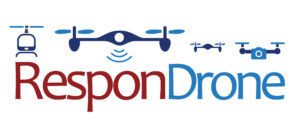
A global consortium focusing on public-safety drones asked first responders what they wanted in UAV systems.
The response? It’s all about the data.
ResponDrone, an international project co-funded by the EU and the Korean government, recently surveyed first responders at a “Design Thinking” workshop in Greece last month.
Attendees agreed: constant, real-time data during a crisis is one of the top benefits of drone deployment.
Workshop participants included regional and national authorities in charge of first-response, agencies, rescue services and fire departments from Greece, France, Armenia, The Netherlands, Latvia, Bulgaria and Israel.
“First responders wish to receive real-time data on current occurrences in the disaster area, on the position and status of potential victims and the first response units deployed in field, as well as the status and current location of available resources,” ResponDrone project coordinator Max Friedrich said in a press release.
Public-safety agencies have rapidly adopted drone systems over the past five years and industry experts are taking note.
For example, the Association for Unmanned Vehicle Systems International and the Airborne International Response Team recently announced an inaugural co-located program designed to unite and educate first responders operating in the drone space.
The DRONERESPONDERS Global Public Safety UAS Summit and Major Cities Meeting will take place during XPONENTIAL 2020, one of the top drone conferences in the world.
Not surprisingly, ResponDrone attendees also said they expected drone systems to visualize a variety of data layers, to be fast and user-friendly and to provide predictive models to improve future disaster response.
The ResponDrone Project is developing “an integrated solution for first responders to easily operate a fleet of drones with multiple synchronized missions to enhance their situation assessment capacity and their own protection,” according to Friedrich.
A study by the Center for the Study of the Drone notes:
- More than 950 American state and local police, sheriff, fire and EMS agencies have acquired drones in recent years;
- Law enforcement agencies make up two-thirds of public-safety agencies with drones;
- The majority of drones operated by public safety agencies are consumer and prosumer models;
- There are more than twice as many public-safety agencies with drones as there are agencies with manned aircraft.
Jason is a longstanding contributor to DroneLife with an avid interest in all things tech. He focuses on anti-drone technologies and the public safety sector; police, fire, and search and rescue.
Beginning his career as a journalist in 1996, Jason has since written and edited thousands of engaging news articles, blog posts, press releases and online content.
Email Jason
TWITTER:@JasonPReagan
Subscribe to DroneLife here.







[…] Source link […]